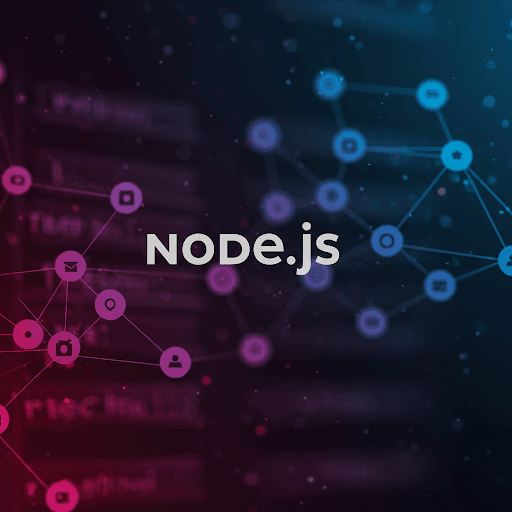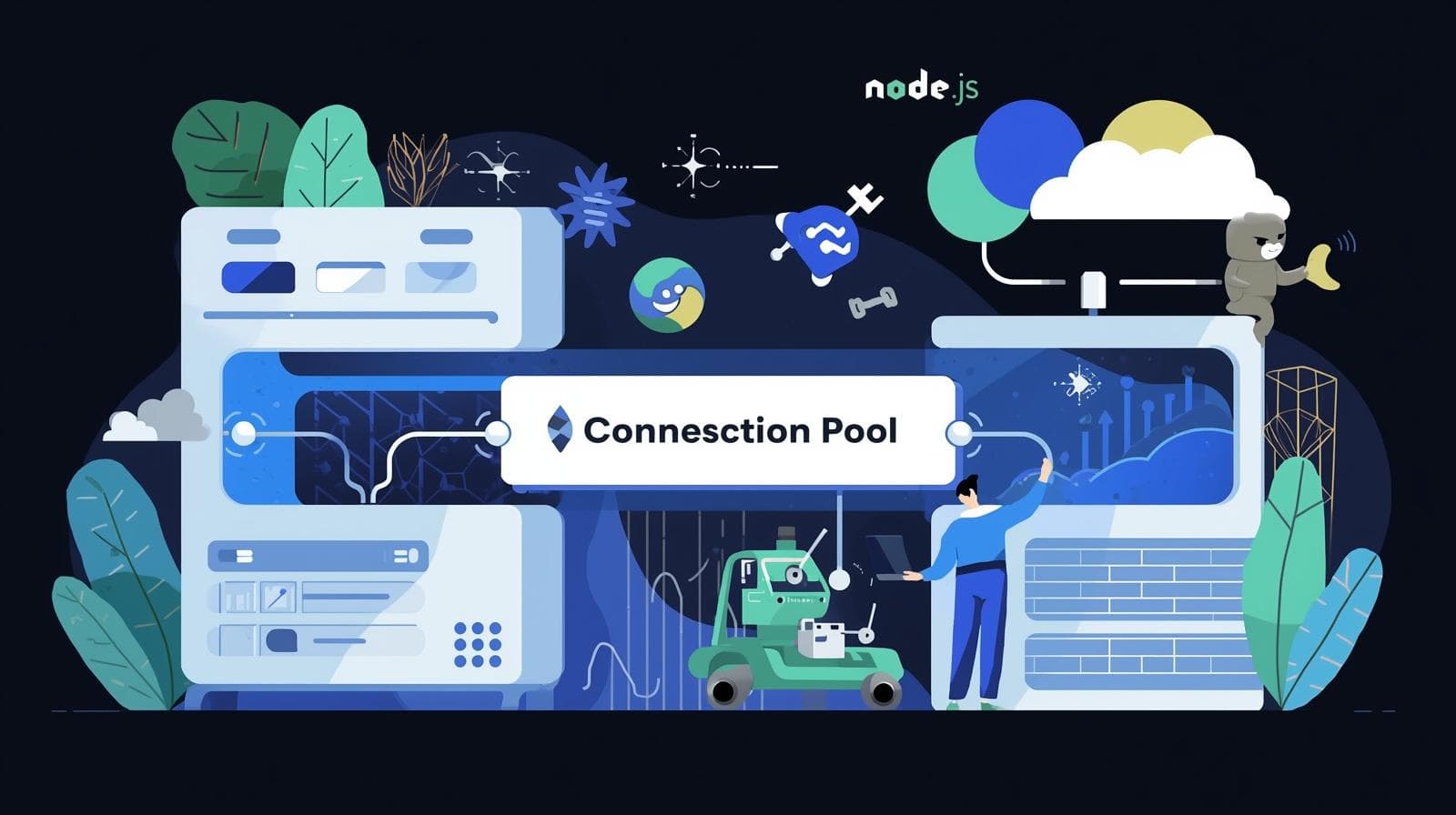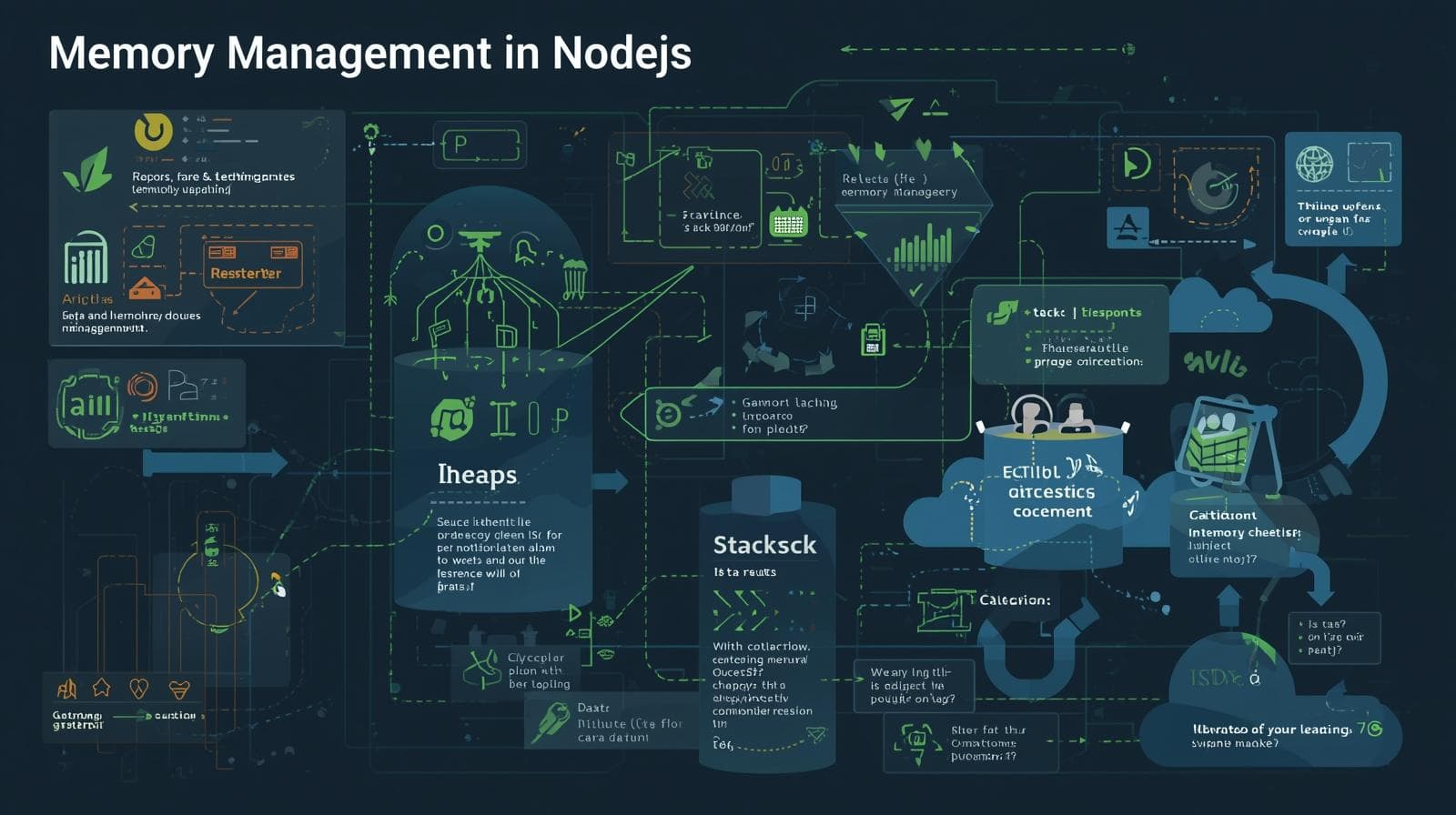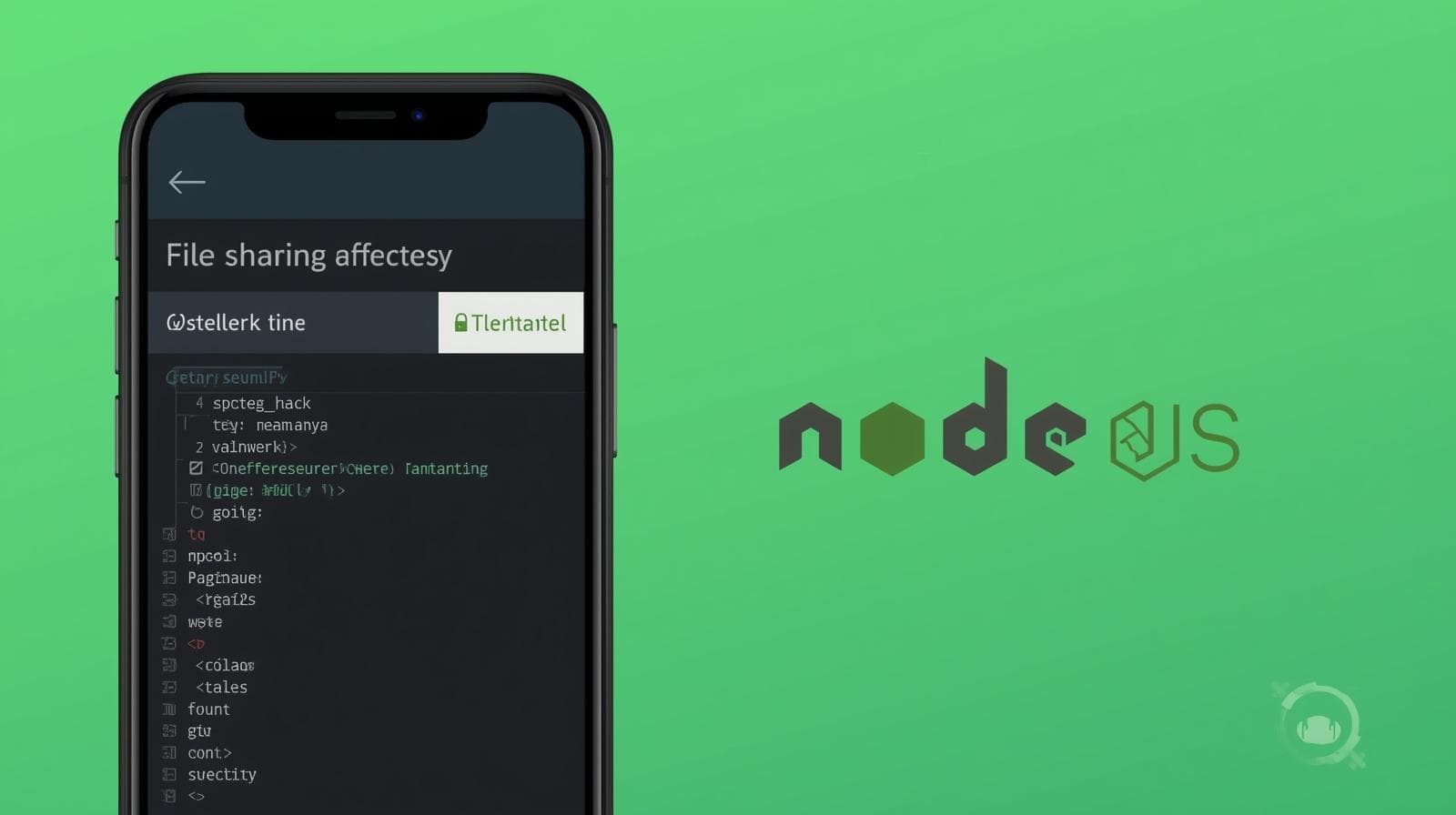Build a Robust Blog API with Node.js: A Step-by-Step Guide for Developers

Learn to build a secure, scalable, and feature-rich Blog API using Node.js, Express.js, MongoDB, and JWT. This in-depth guide covers everything from setup to deployment and best practices.

Build a Robust Blog API with Node.js: A Step-by-Step Guide for Developers
Building a Scalable Blog API with Node.js: Your Ultimate Guide
So, you want to build a blog. Not just any blog, but one with a sleek, modern front-end, maybe a mobile app, or perhaps you're building a content management system for a client. In today's decoupled architecture world, the secret sauce for all these scenarios is a robust, well-designed Application Programming Interface (API).
Think of an API as the engine of your car. The beautiful bodywork and interior (the front-end) are useless without the powerful engine (the back-end API) underneath. In this guide, we're going to build that engine—a fully-featured Blog API—using the power of Node.js.
We won't just scratch the surface. We'll dive deep into setting up a Node.js server with Express, connecting to a MongoDB database with Mongoose, implementing JWT authentication, writing clean, maintainable code, and discussing best practices that scale from a simple side project to an enterprise-level application.
Whether you're a beginner looking to understand backend development or an intermediate developer aiming to solidify your skills, this guide is for you. Let's get our hands dirty.
What Exactly Are We Building?
Before we write a single line of code, let's define our project. Our Blog API will be a RESTful API that allows clients (like a React front-end, an Android app, or a Vue.js SPA) to perform all the essential actions of a blog.
Core Features:
User Authentication & Authorization: Users can sign up and log in. We'll use JWT (JSON Web Tokens) to secure our endpoints.
CRUD for Blog Posts:
Create: Authenticated users can write new blog posts.
Read: Anyone can read published posts. We'll implement fetching all posts and a single post.
Update: Only the author of a post can update it.
Delete: Only the author of a post can delete it.
Data Modeling: We'll design schemas for our Users and Blog Posts.
Error Handling & Validation: Centralized error handling and input validation to make our API robust and user-friendly.
Security: We'll hash passwords and protect our routes.
The Technology Stack: Our Toolbox
Why did we choose these technologies?
Node.js: A JavaScript runtime that allows us to run JavaScript on the server. It's fast, has a huge ecosystem (npm), and uses a non-blocking, event-driven model which is perfect for I/O-heavy operations like APIs.
Express.js: The most popular web framework for Node.js. It simplifies the process of building servers and handling HTTP requests and responses.
MongoDB: A NoSQL database that stores data in flexible, JSON-like documents. This flexibility is great for a blog where a post might have tags, comments, and featured images.
Mongoose: An ODM (Object Data Modeling) library for MongoDB and Node.js. It provides a straight-forward, schema-based solution to model our application data and includes built-in type casting, validation, and query building.
JSON Web Tokens (JWT): A standard for securely transmitting information between parties as a JSON object. This is the foundation of our stateless authentication system.
bcryptjs: A library to hash passwords. Never, ever store passwords in plain text.
Step 1: Laying the Foundation - Project Setup
First, ensure you have Node.js and MongoDB installed on your machine. You can use a local MongoDB installation or a cloud-based one like MongoDB Atlas (highly recommended for ease of use).
Let's initialize our project:
bash
mkdir blog-api
cd blog-api
npm init -yThis creates a package.json file. Now, let's install our core dependencies:
bash
npm install express mongoose bcryptjs jsonwebtokenAnd these are development dependencies we'll need for a smoother experience (like auto-restarting the server):
bash
npm install --save-dev nodemon dotenvNow, create the following files and folders:
text
blog-api/
│ .env
│ .gitignore
│ package.json
│ server.js
│
├───models/
│ User.js
│ Post.js
│
├───middleware/
│ auth.js
│
└───routes/
auth.js
posts.jsLet's set up our basic server in server.js:
javascript
// server.js
require('dotenv').config();
const express = require('express');
const mongoose = require('mongoose');
const app = express();
// Middleware to parse JSON bodies
app.use(express.json());
// Connect to MongoDB
mongoose.connect(process.env.MONGO_URI, {
useNewUrlParser: true,
useUnifiedTopology: true,
})
.then(() => console.log('MongoDB connected successfully'))
.catch(err => console.log(err));
// Basic test route
app.get('/', (req, res) => {
res.send('Blog API is running...');
});
// Import Routes
app.use('/api/auth', require('./routes/auth'));
app.use('/api/posts', require('./routes/posts'));
const PORT = process.env.PORT || 5000;
app.listen(PORT, () => console.log(`Server running on port ${PORT}`));Create a .env file to store your environment variables securely:
env
// .env
MONGO_URI=your_mongodb_connection_string_here
JWT_SECRET=your_super_secret_jwt_key_here
PORT=5000Add node_modules and .env to your .gitignore file.
Finally, add a start script to your package.json:
json
"scripts": {
"start": "node server.js",
"dev": "nodemon server.js"
}Now you can run npm run dev to start your server with nodemon.
Step 2: Modeling Our Data with Mongoose
Data models are the heart of our application. They define the structure of our documents in the database.
User Model (models/User.js):
javascript
const mongoose = require('mongoose');
const bcrypt = require('bcryptjs');
const UserSchema = new mongoose.Schema({
username: {
type: String,
required: [true, 'Please provide a username'],
unique: true,
trim: true,
minlength: 3
},
email: {
type: String,
required: [true, 'Please provide an email'],
unique: true,
match: [
/^\w+([\.-]?\w+)*@\w+([\.-]?\w+)*(\.\w{2,3})+$/,
'Please provide a valid email'
]
},
password: {
type: String,
required: [true, 'Please provide a password'],
minlength: 6,
select: false // Prevents the password from being returned in queries by default
}
}, {
timestamps: true // Adds createdAt and updatedAt fields
});
// Middleware to hash the password before saving
UserSchema.pre('save', async function(next) {
// Only run this function if password was modified
if (!this.isModified('password')) {
next();
}
// Hash password with strength of 12
const salt = await bcrypt.genSalt(12);
this.password = await bcrypt.hash(this.password, salt);
next();
});
// Method to match entered password with hashed password in database
UserSchema.methods.matchPassword = async function(enteredPassword) {
return await bcrypt.compare(enteredPassword, this.password);
};
module.exports = mongoose.model('User', UserSchema);Post Model (models/Post.js):
javascript
const mongoose = require('mongoose');
const PostSchema = new mongoose.Schema({
title: {
type: String,
required: [true, 'Please provide a title'],
trim: true,
maxlength: [100, 'Title cannot be more than 100 characters']
},
content: {
type: String,
required: [true, 'Please provide content for the post']
},
excerpt: {
type: String,
maxlength: [500, 'Excerpt cannot be more than 500 characters']
},
featuredImage: {
type: String, // This will be a URL to an image
default: null
},
author: {
type: mongoose.Schema.Types.ObjectId,
ref: 'User', // This creates a reference to the User model
required: true
},
tags: [{
type: String,
trim: true
}],
isPublished: {
type: Boolean,
default: false
}
}, {
timestamps: true
});
// Create an index on the author field for faster queries
PostSchema.index({ author: 1 });
module.exports = mongoose.model('Post', PostSchema);Step 3: Implementing JWT Authentication
Authentication is crucial. We'll create a route for user registration and login, which will return a JWT.
Auth Middleware (middleware/auth.js):
This middleware will protect our routes by verifying the JWT.
javascript
const jwt = require('jsonwebtoken');
const User = require('../models/User');
const protect = async (req, res, next) => {
let token;
// Check for token in the Authorization header
if (req.headers.authorization && req.headers.authorization.startsWith('Bearer')) {
try {
// Get token from header
token = req.headers.authorization.split(' ')[1]; // Format: "Bearer <token>"
// Verify token
const decoded = jwt.verify(token, process.env.JWT_SECRET);
// Get user from the token (excluding the password)
req.user = await User.findById(decoded.id).select('-password');
next(); // Proceed to the next middleware/route
} catch (error) {
console.log(error);
return res.status(401).json({ message: 'Not authorized, token failed' });
}
}
if (!token) {
return res.status(401).json({ message: 'Not authorized, no token' });
}
};
module.exports = { protect };Auth Routes (routes/auth.js):
javascript
const express = require('express');
const jwt = require('jsonwebtoken');
const User = require('../models/User');
const { protect } = require('../middleware/auth');
const router = express.Router();
// @desc Register a new user
// @route POST /api/auth/register
// @access Public
router.post('/register', async (req, res) => {
const { username, email, password } = req.body;
try {
// Check if user exists
const userExists = await User.findOne({ email });
if (userExists) {
return res.status(400).json({ message: 'User already exists' });
}
// Create user
const user = await User.create({
username,
email,
password, // This will be hashed by the pre-save middleware in the model
});
if (user) {
// Generate JWT
const token = jwt.sign(
{ id: user._id },
process.env.JWT_SECRET,
{ expiresIn: '30d' }
);
res.status(201).json({
_id: user._id,
username: user.username,
email: user.email,
token // Send the token to the client
});
}
} catch (error) {
console.error(error);
res.status(500).json({ message: 'Server Error during registration' });
}
});
// @desc Authenticate a user & get token
// @route POST /api/auth/login
// @access Public
router.post('/login', async (req, res) => {
const { email, password } = req.body;
try {
// Check for user email and include the password (since it's select: false)
const user = await User.findOne({ email }).select('+password');
if (user && (await user.matchPassword(password))) {
// Generate JWT
const token = jwt.sign(
{ id: user._id },
process.env.JWT_SECRET,
{ expiresIn: '30d' }
);
res.json({
_id: user._id,
username: user.username,
email: user.email,
token
});
} else {
res.status(401).json({ message: 'Invalid email or password' });
}
} catch (error) {
console.error(error);
res.status(500).json({ message: 'Server Error during login' });
}
});
// @desc Get logged-in user profile
// @route GET /api/auth/me
// @access Private
router.get('/me', protect, async (req, res) => {
// The `protect` middleware adds the user to `req.user`
res.json({
_id: req.user._id,
username: req.user.username,
email: req.user.email
});
});
module.exports = router;Step 4: Building the Blog Post CRUD Routes
Now for the main event: the routes to create, read, update, and delete blog posts.
Post Routes (routes/posts.js):
javascript
const express = require('express');
const Post = require('../models/Post');
const { protect } = require('../middleware/auth');
const router = express.Router();
// @desc Get all published posts
// @route GET /api/posts
// @access Public
router.get('/', async (req, res) => {
try {
// Populate the 'author' field, but only with 'username'
const posts = await Post.find({ isPublished: true })
.populate('author', 'username')
.sort({ createdAt: -1 }); // Sort by newest first
res.json(posts);
} catch (error) {
console.error(error);
res.status(500).json({ message: 'Server Error' });
}
});
// @desc Get a single post by ID
// @route GET /api/posts/:id
// @access Public
router.get('/:id', async (req, res) => {
try {
const post = await Post.findById(req.params.id).populate('author', 'username');
if (!post) {
return res.status(404).json({ message: 'Post not found' });
}
// Optional: You might want to check if the post is published, unless the author is requesting it.
// if (!post.isPublished) { ... }
res.json(post);
} catch (error) {
console.error(error);
if (error.kind === 'ObjectId') {
return res.status(404).json({ message: 'Post not found' });
}
res.status(500).json({ message: 'Server Error' });
}
});
// @desc Create a new post
// @route POST /api/posts
// @access Private
router.post('/', protect, async (req, res) => {
const { title, content, excerpt, tags, featuredImage, isPublished } = req.body;
try {
const newPost = new Post({
title,
content,
excerpt,
tags,
featuredImage,
isPublished,
author: req.user.id // From the protect middleware
});
const post = await newPost.save();
// Populate the author info before sending back the response
await post.populate('author', 'username');
res.status(201).json(post);
} catch (error) {
console.error(error);
// Mongoose validation error
if (error.name === 'ValidationError') {
const messages = Object.values(error.errors).map(val => val.message);
return res.status(400).json({ message: messages.join(', ') });
}
res.status(500).json({ message: 'Server Error' });
}
});
// @desc Update a post
// @route PUT /api/posts/:id
// @access Private
router.put('/:id', protect, async (req, res) => {
try {
let post = await Post.findById(req.params.id);
if (!post) {
return res.status(404).json({ message: 'Post not found' });
}
// Check if the logged-in user is the author of the post
if (post.author.toString() !== req.user.id) {
return res.status(403).json({ message: 'User not authorized to update this post' });
}
post = await Post.findByIdAndUpdate(req.params.id, { $set: req.body }, { new: true, runValidators: true }).populate('author', 'username');
res.json(post);
} catch (error) {
console.error(error);
if (error.kind === 'ObjectId') {
return res.status(404).json({ message: 'Post not found' });
}
res.status(500).json({ message: 'Server Error' });
}
});
// @desc Delete a post
// @route DELETE /api/posts/:id
// @access Private
router.delete('/:id', protect, async (req, res) => {
try {
const post = await Post.findById(req.params.id);
if (!post) {
return res.status(404).json({ message: 'Post not found' });
}
// Check if the logged-in user is the author of the post
if (post.author.toString() !== req.user.id) {
return res.status(403).json({ message: 'User not authorized to delete this post' });
}
await Post.findByIdAndDelete(req.params.id);
res.json({ message: 'Post removed successfully' });
} catch (error) {
console.error(error);
if (error.kind === 'ObjectId') {
return res.status(404).json({ message: 'Post not found' });
}
res.status(500).json({ message: 'Server Error' });
}
});
module.exports = router;Testing the API
You can test your API using tools like Postman or Thunder Client (VS Code extension).
Register a User:
POST http://localhost:5000/api/auth/registerwith a JSON body{ "username": "john", "email": "john@example.com", "password": "123456" }. You'll get a token back.Create a Post:
POST http://localhost:5000/api/posts. In the Headers, addAuthorization: Bearer <your_token_here>. The body should be JSON withtitle,content, etc.Get All Posts:
GET http://localhost:5000/api/posts(no auth needed).
Real-World Use Cases & Best Practices
This simple API is a blueprint for much larger systems.
Use Case 1: Headless CMS. This API can serve as the backend for a headless CMS like Strapi or Contentful, powering blogs for multiple clients from a single codebase.
Use Case 2: Mobile App Backend. A React Native or Flutter mobile app can use this API to fetch and display blog posts.
Use Case 3: Multi-author Platform. The authorization logic we built easily scales to support editors, admins, and contributors with different permission levels.
Best Practices to Level Up:
Input Validation: We used Mongoose validation, but for more complex rules, consider using Joi or express-validator.
Error Handling Middleware: Create a centralized error handling middleware to avoid repetitive try-catch blocks.
Pagination: For the
GET /api/postsroute, implement pagination usinglimitandskipto handle a large number of posts efficiently.Rate Limiting: Use a library like
express-rate-limitto prevent abuse and DDoS attacks.Environment Configuration: Use different
.envfiles for development, testing, and production.Logging: Implement a logging system (e.g., with
winston) to monitor your API in production.API Documentation: Use tools like Swagger/OpenAPI to auto-generate documentation for your endpoints. This is crucial for front-end developers.
Taking it to the Next Level
Building this API is a significant achievement, but it's just the beginning. To become a production-ready, professional developer, you need to master concepts like:
Deployment: Deploying your Node.js app to platforms like Heroku, DigitalOcean, or AWS.
Testing: Writing unit and integration tests with Jest and Supertest.
Containers: Dockerizing your application for consistent environments.
Advanced Security: Implementing CORS, sanitizing data, and using Helmet.js.
Performance Optimization: Caching with Redis and database indexing.
To learn professional software development courses that cover these advanced topics and more, such as Python Programming, Full Stack Development, and the MERN Stack, visit and enroll today at codercrafter.in. Our structured curriculum and industry-experienced mentors will guide you from fundamentals to job-ready expertise.
Frequently Asked Questions (FAQs)
Q1: Why not use a SQL database like PostgreSQL?
You absolutely can! MongoDB was chosen for its flexibility and ease of use with JSON. PostgreSQL is a powerful relational database. The choice depends on your data structure and project requirements. Learning both is a great idea.
Q2: How do I handle file uploads for featured images?
You would use a middleware like multer to handle multipart/form-data uploads. The image file would be uploaded to a service like AWS S3, Cloudinary, or your server, and the returned URL would be stored in the featuredImage field.
Q3: Is JWT the most secure way to handle authentication?
For most use cases, yes. However, you must store the JWT securely on the client-side (not in localStorage for SPAs due to XSS vulnerabilities; use httpOnly cookies). Always use HTTPS in production.
Q4: How can I add comments to the blog posts?
You would create a new Comment model that references both the Post and the User (author). Then, you'd create routes to POST /api/posts/:id/comments and GET /api/posts/:id/comments.
Q5: My API feels messy. How can I structure it better?
Consider using the MVC (Model-View-Controller) pattern, separating your business logic into controller files. For even larger applications, look into layered architecture (Service Layer, Repository Pattern).
Conclusion
Congratulations! You've just built a solid, secure, and scalable Blog API with Node.js. You've implemented user authentication with JWT, defined data models with Mongoose, and created a full set of CRUD operations for blog posts, all while keeping security and best practices in mind.
This project is a fantastic foundation. You can extend it by adding features like comments, likes, user profiles, categories, and a powerful admin panel. The patterns you've learned here—routing, middleware, database interaction, and authentication—are transferable to virtually any backend application you'll build in the future.
The world runs on APIs, and you now have the knowledge to create them. Keep coding, keep building, and don't stop learning.
Ready to transform your passion for coding into a thriving career? Dive deeper into the world of software development with our comprehensive courses. From mastering the MERN stack to understanding complex system design, CoderCrafter is your partner in this journey. Explore our courses and take the next step at codercrafter.in.









